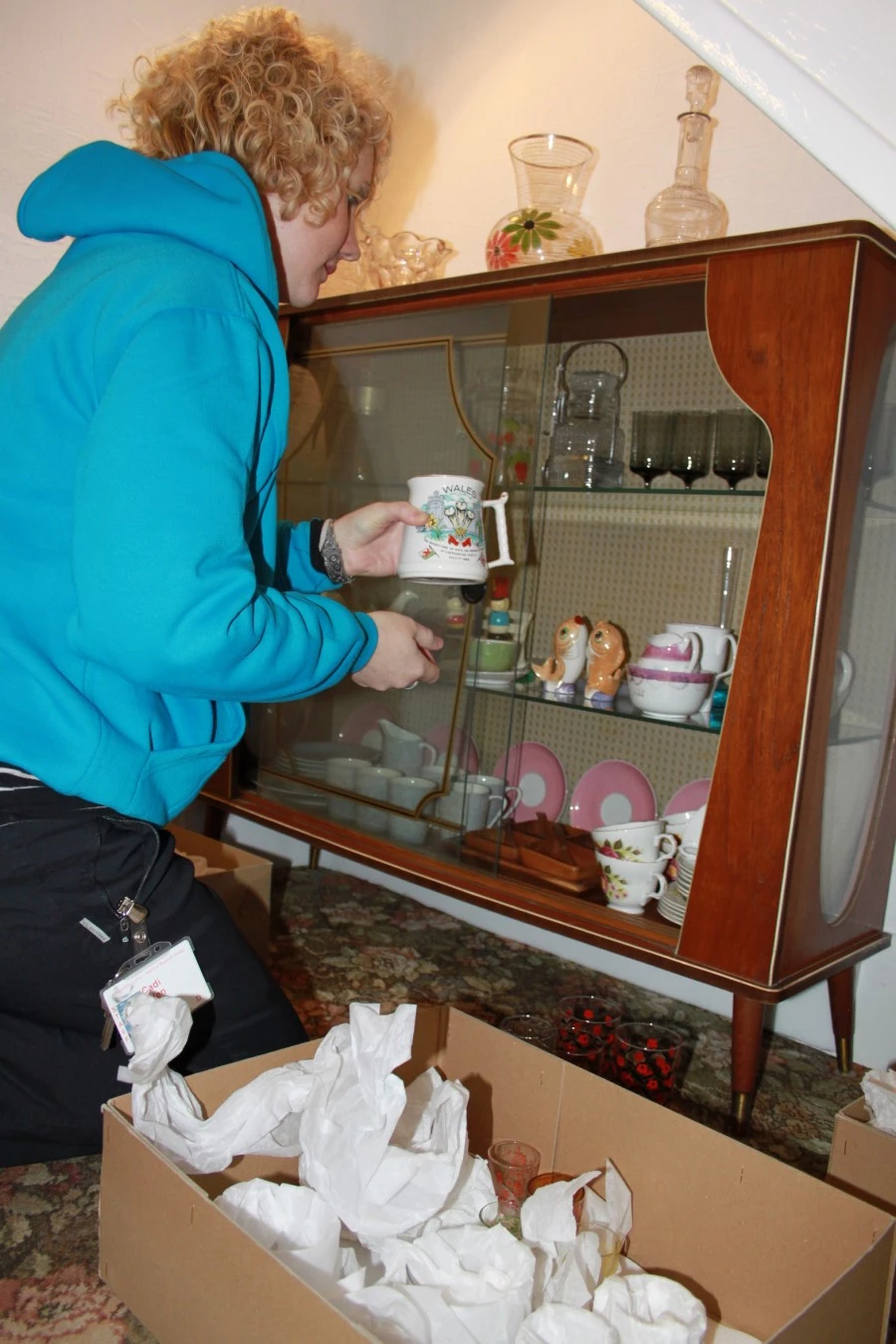Behind the Scenes - Cleaning Work
21 June 2020
Imagine cleaning a house that’s visited by 140,000 people every year. That’s the task facing the cleaning team at the National Slate Museum as they look after Fron Haul, the quarrymen’s houses.
Cleaning in a museum is different to cleaning your home. At home, we clean so that things can look their best. We want things to look clean and shiny, using quick and easy techniques. We want things to look good in the museum too, of course, but there are other considerations when it comes to cleaning, in order to preserve the objects in the long term. This is called preventative conservation.
With so many visitors, coupled with a very dusty site, intensive cleaning – like a kind of spring clean – is needed four times a year. This means closing every house in turn for a whole week, so we can concentrate on the work without being disturbed. We work in a systematic way, one room at a time. It’s important to take pictures before starting the work so we can put everything back in the right place at the end.
We have to be very careful not to damage anything, so we use specialist tools and techniques for different objects.
Floors
For slate and wooden floors, we use a vacuum cleaner and brush. Occasionally we mop slate floors with water, but we don’t use modern chemicals. It’s important not to brush the mop against any furniture as the water could cause damage.
Furniture
Large furniture with flat, smooth surfaces are cleaned using a lint free duster. We use this kind of duster as it doesn’t contain any particles that could scratch the furniture. More ornamental furniture with mouldings are cleaned using a vacuum cleaner and brush. We use a technique called shadow vacuuming – holding the vacuum cleaner close to the brush so that dust is sucked from the air, without touching the object with the nozzle, which could scratch the surface.
Ceramic objects
Ceramic objects such as plates and saucers require more attention. Four times a year we clean them using cotton wool, cotton buds, a tiny amount of water and cleaning liquid. We use a specialist cleaning liquid rather than normal washing up liquid, and we wipe the cotton wool lightly over the ceramic.
Brasses and copper
Brasso may be your best friend when it comes to cleaning at home, but it’s no good for cleaning brasses in a museum! Cleaning means getting rid of dirt and dust, while polishing removes tarnish and creates a shiny surface. Polishing requires using abrasives, so every time you polish, a thin layer of the original surface is lost. Regular polishing can eventually lead to markings and ornamental details being lost.
So, in a museum, a hogs hair brush and vacuum cleaner is the way to go, with a special cloth used to give the objects some shine.
Plastic, frames, and books
We use a soft brush for these objects – a pony hair brush. Once again, we use the shadow vacuuming technique. The covers, front and last pages of books need to be cleaned – this takes time!
Clocks
Once a year the clocks get to visit St Fagans National Museum of History for a rest. In St Fagans, the inner mechanisms are treated by Amgueddfa Cymru’s conservators.
Textiles
The process of cleaning and washing textiles can be very damaging. Every time a textile such as a curtain, tablecloth or item of clothing is washed, it is damaged slightly as loose fibres are washed away. To protect textiles, we must avoid washing them if possible, so the best way of cleaning is with a vacuum cleaner. We place a piece of muslin between the textile and the nozzle.
Tin and cast-iron objects
To clean tin and cast-iron objects, we use an old faithful from the garage or workshop – 3 in 1 oil. Rub a thin layer into the object with a lint free duster, and it will look brand new.
Grates and chimney
Yes, the fireplace, or the ‘range’, also needs attention, in the form of a good coat of black lead polish. Two cloths are used, one for rubbing the polish into the range and the other to get the shine. The chimney also needs to be cleaned, once a year. This is necessary from a safety point of view of course, but chimneys are also good breeding grounds for insects which can damage objects. Sometimes birds will nest in chimneys, and nests are perfect homes for insects. The cleaning is done by a local chimney sweep, using a traditional brush and a giant vacuum cleaner.
After the cleaning is done, everything must be put back in place using the photographs taken at the beginning of the work as a reference.




Comments - (1)